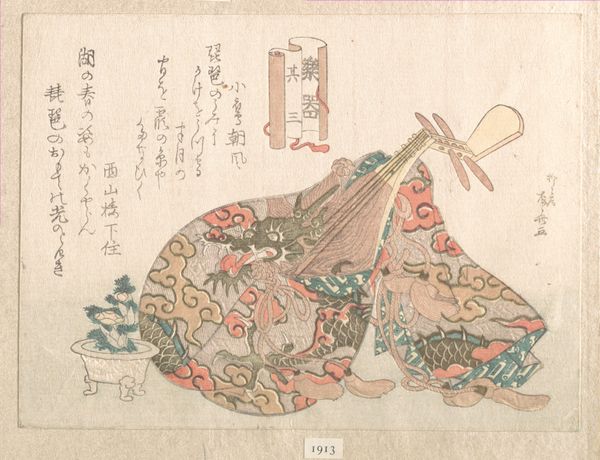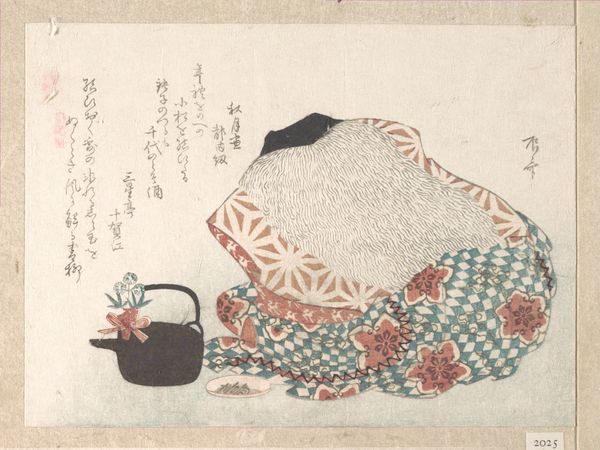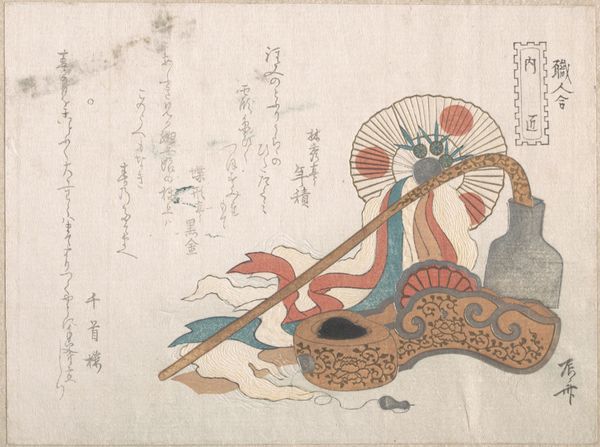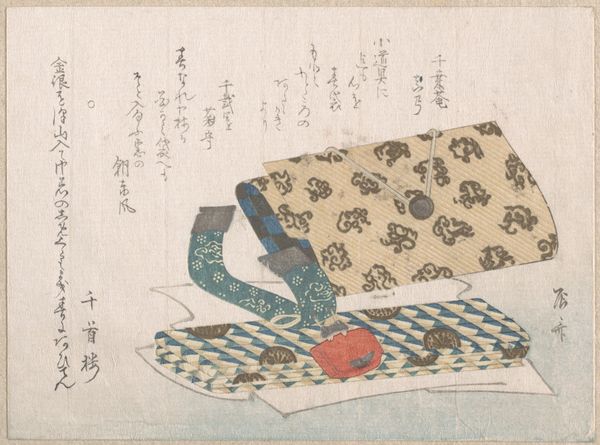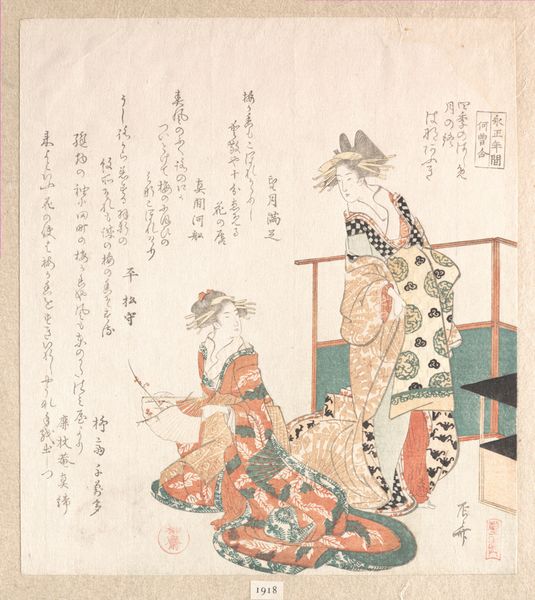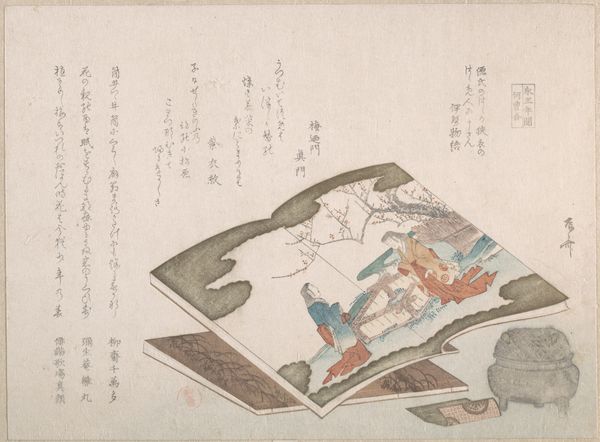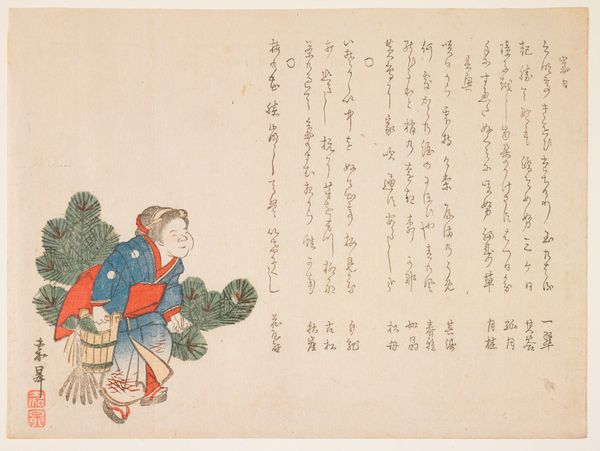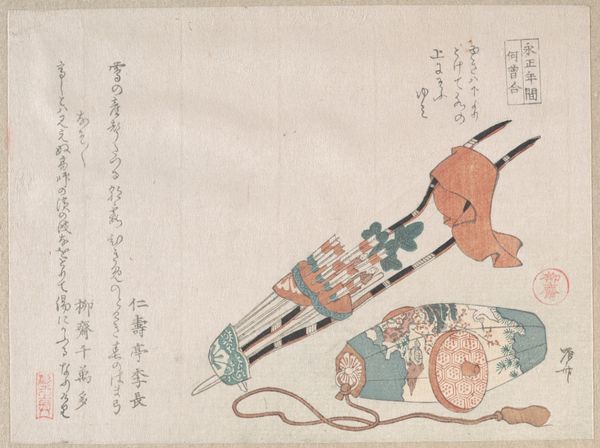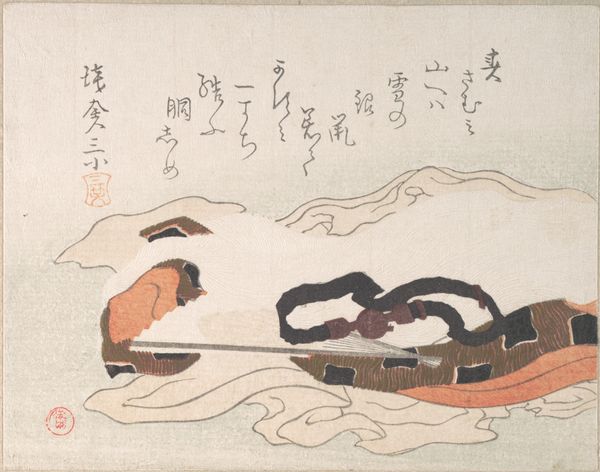
print, textile
#
water colours
# print
#
asian-art
#
textile
#
ukiyo-e
Dimensions: 5 5/16 x 7 3/8 in. (13.5 x 18.7 cm)
Copyright: Public Domain
Curator: Ryūryūkyo Shinsai’s “Rolls of Cloth, Cotton and Yarn,” created in the 19th century, invites us into a world of textures and patterns, now held within the Metropolitan Museum of Art's collection. Editor: The muted palette immediately suggests restraint, even elegance. Though a seemingly simple still life, it speaks to me of a carefully curated selection, a controlled presentation of everyday wares. Curator: Precisely. This Ukiyo-e print offers us a glimpse into the aesthetic sensibilities of the era. Note how Shinsai elevates these commonplace textiles through thoughtful composition. He transforms material culture into art, focusing on design itself. Editor: And those patterns! The checkered cloth juxtaposed with the floral—a tension that really highlights the artistry inherent in functional objects. Considering Japan's history of textile production, I see this as quiet testament to craftswomen, merchants and working class aesthetics that are generally unseen. Curator: Indeed, the presence of text emphasizes an exchange, inviting commentary. But consider, too, the symbolism inherent in textiles—as representations of societal structures, their presence can serve as metaphors for interconnection, shared narrative, communal history. It suggests the social importance of textile in this period, perhaps hinting at rituals, industries, and social stratification connected to these crafts. Editor: Yes, and in that light, I'm drawn to consider questions of gendered labor here. Did the roles associated with crafting textiles influence its accessibility and status among different social groups? I see questions raised regarding labour practices and identity politics. Curator: That’s a vital dimension to explore. What appears at first to be just another aesthetic contemplation gradually becomes more profound, evoking a broader examination of 19th-century societal values, their expression via design—a microcosm reflecting broader cultural concerns. Editor: A seemingly modest piece offers a surprising number of layers—a starting point for exploring connections among economy, design, labour practices and society, really underscoring how "still life" isn't truly static at all!
Comments
No comments
Be the first to comment and join the conversation on the ultimate creative platform.

